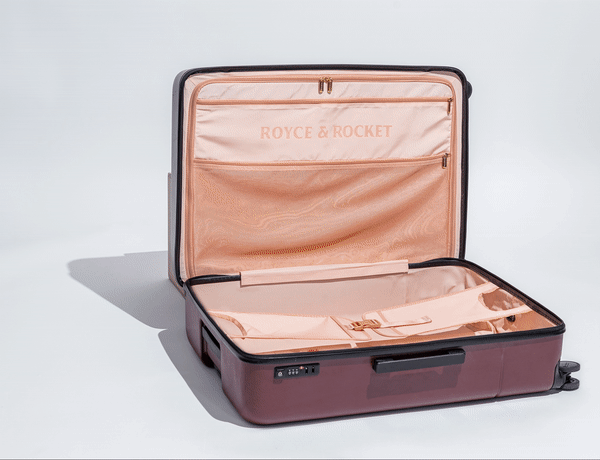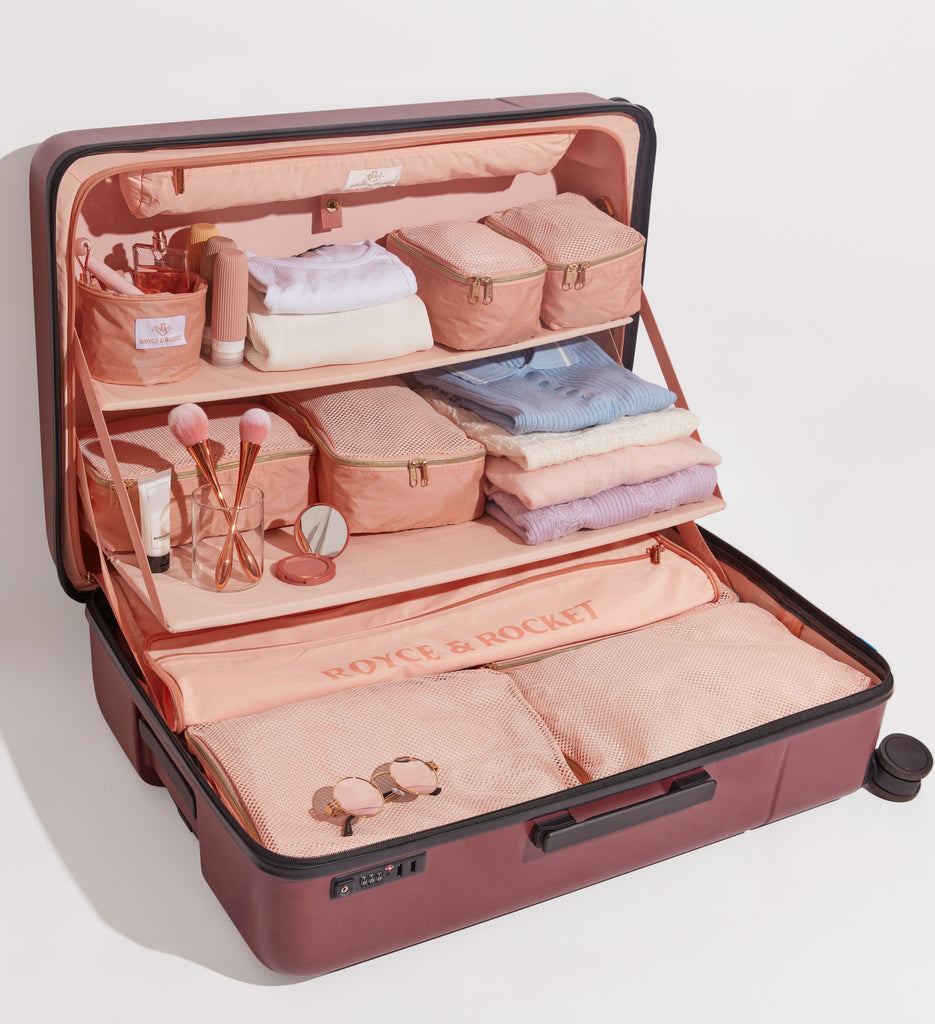When embarking on a journey, whether it's a business trip, a dream vacation, or a weekend getaway, ensuring the security of your luggage is of utmost importance. Luggage tags play a significant role in helping your bags find their way back to you if they are lost, but did you know that where you attach these tags can impact their effectiveness? In this comprehensive guide, we will explore the best practices for attaching luggage tags to ensure maximum security and peace of mind during your travels.
On the Exterior Handle
One of the most common and effective ways to attach luggage tags is to secure them to the exterior handle of your suitcase. This placement is easily visible to both airport staff and fellow travelers, making it easier to identify your bag in a sea of similar-looking luggage. When using a 30-inch suitcase or any large luggage, make sure to use durable luggage tags that won't tear or get damaged during transit.
Use Lockable Luggage Tags
For added security, consider using lockable luggage tags that can be fastened with a secure lock. These tags provide an extra layer of protection, preventing unauthorized removal or tampering of your identification details. Lockable luggage tags are especially valuable when traveling to destinations with higher incidents of baggage mishandling or theft.
Inside Your Luggage
While attaching luggage tags to the exterior is essential for easy identification, it's also a smart idea to place a duplicate tag or a travel itinerary with your contact information inside your luggage. In case the external tag gets lost or damaged during transit, having your details inside the bag can still help airport personnel reunite you with your belongings.
Using Luggage Tag Holders
To protect your luggage tags from wear and tear, consider investing in luggage tag holders or sleeves. These transparent plastic sleeves shield the tags from dirt, moisture, and rough handling, ensuring that your contact information remains legible and intact throughout your journey.
Incorporating Luggage Tags into Your Luggage with Shelves
If you're using a suitcase with built-in shelves, you can attach your luggage tags to the shelves themselves. This way, your identification details are easily accessible, and you won't have to worry about tags getting snagged on conveyor belts or other luggage during handling.
Avoiding Overcrowding
When attaching luggage tags, ensure they are easily visible and not obscured by other tags or decorations. Avoid overcrowding the handle or strap with too many tags or accessories, as this can make it challenging for airport staff to read the necessary information quickly.
Personalizing Your Luggage Tags
While practicality and security are crucial, adding a touch of personalization to your luggage tags can also be beneficial. Consider adding a unique identifier or a distinguishing feature that will make your luggage stand out. Personalized luggage tags can make it easier for you to spot your bag on the carousel and deter potential thieves who might mistake your bag for theirs.
Remove Old Luggage Tags
Before attaching new luggage tags, ensure that any old tags or outdated information is removed from your luggage. Having multiple tags with conflicting details can confuse airport personnel and delay the process of returning your lost luggage.
Waterproof and Sturdy Tags for Adventure Travel
If you're embarking on an adventure trip that involves water-based activities, hiking, or other rugged adventures, opt for waterproof and sturdy luggage tags. These tags can withstand harsh conditions, ensuring your information remains legible and your bags stay identifiable throughout your adventurous journey.
Checking Tags Before Each Trip
Before every trip, double-check that your luggage tags are securely attached and that your contact information is up to date. This simple yet essential step can save you from the stress and inconvenience of lost luggage during your travels.
Additional Tips for Maximum Security
In addition to attaching luggage tags, there are several other security measures you can take to protect your luggage and belongings while traveling. Firstly, invest in high-quality luggage with built-in security features, such as TSA-approved locks. These locks allow airport security to inspect your bag without damaging it. Additionally, consider using luggage with shelves or compartments to keep your belongings organized and prevent them from shifting during transit. Luggage with shelves offers a convenient way to access your items without having to unpack your entire bag.
Securing Your Luggage at Hotels
While traveling, your luggage is not only vulnerable during transit but also at your hotel or accommodation. To ensure maximum security, use the provided luggage storage options, such as in-room safes or secure luggage rooms. When leaving your hotel for sightseeing or exploring, lock your luggage and store valuable items in the safe. Avoid leaving your bags unattended, especially in crowded places or tourist hotspots.
Keeping Your Luggage Tags Updated
As your contact information or travel plans change, remember to update your luggage tags accordingly. If you have multiple trips planned, ensure that the correct tags are attached to each bag. Having up-to-date tags will ensure that your bags are correctly identified and returned to you if they are misplaced.
Registering Your Luggage
Some airlines and luggage manufacturers offer luggage registration services that allow you to register your bag's unique identification number. In case your luggage is lost, this registration can expedite the process of locating and returning your bag to you. Check with your airline or luggage manufacturer to see if this service is available.
Using Technology for Security
Consider using technology to enhance the security of your luggage. GPS tracking devices and Bluetooth-enabled luggage tags can help you locate your bags in case they are lost or misplaced. These devices can also send notifications to your smartphone if your luggage is moved outside a specified range.
Notifying Your Airline
In the unfortunate event that your luggage is lost, promptly notify the airline or transportation company. Most airlines have dedicated lost luggage departments that can assist you in locating and retrieving your bags. Be sure to provide them with accurate information about your luggage, including its color, size, brand, and any unique identifying features. Having luggage tags with clear and up-to-date contact information will expedite this process and increase the chances of a swift resolution.
Tracking Your Luggage
Many airlines now offer online luggage tracking services that allow you to monitor the whereabouts of your bag in real-time. By entering the unique baggage tag number provided on your luggage tag, you can check the status and location of your bag throughout your journey. Utilizing this service can give you peace of mind, especially during layovers or connecting flights, as you can ensure that your luggage is on the same route as you.
Extra Precautions for International Travel
When traveling internationally, there are additional security considerations to keep in mind. Ensure that your luggage tags contain contact information that includes an international dialing code, and include both your home and destination addresses. Also, consider adding a local contact number, such as that of your hotel or a reliable local contact, in case your primary phone number is not reachable.
Using QR Code Luggage Tags
An innovative option for modern travelers is using QR code luggage tags. These tags contain a QR code that, when scanned with a smartphone, can display your contact information and travel itinerary. QR code tags are convenient and allow airport personnel or fellow travelers to quickly access your details without having to manually read your luggage tag. Additionally, they can store additional information, such as your airline, flight number, and hotel details, which can be useful in case of any unforeseen events.
Double-Checking Luggage Tags After Each Leg of Your Journey
During multi-leg journeys with layovers or connections, it's essential to double-check that your luggage tags are still securely attached after each segment of your trip. Airport handling processes and conveyor belts can sometimes be rough on luggage, and tags may become loose or damaged during transit. By taking a moment to ensure that your tags are intact and visible at each layover, you reduce the risk of your luggage being misdirected to the wrong destination.
In conclusion, attaching luggage tags strategically is a simple yet critical step in ensuring the security and smooth handling of your bags during your travels. By following these best practices, you can increase the chances of your luggage being safely returned to you if it is lost or misplaced. Remember to use durable and lockable luggage tags, incorporate tags into your luggage with shelves, and keep your contact information updated to maximize the security of your belongings. Happy and secure travels!





